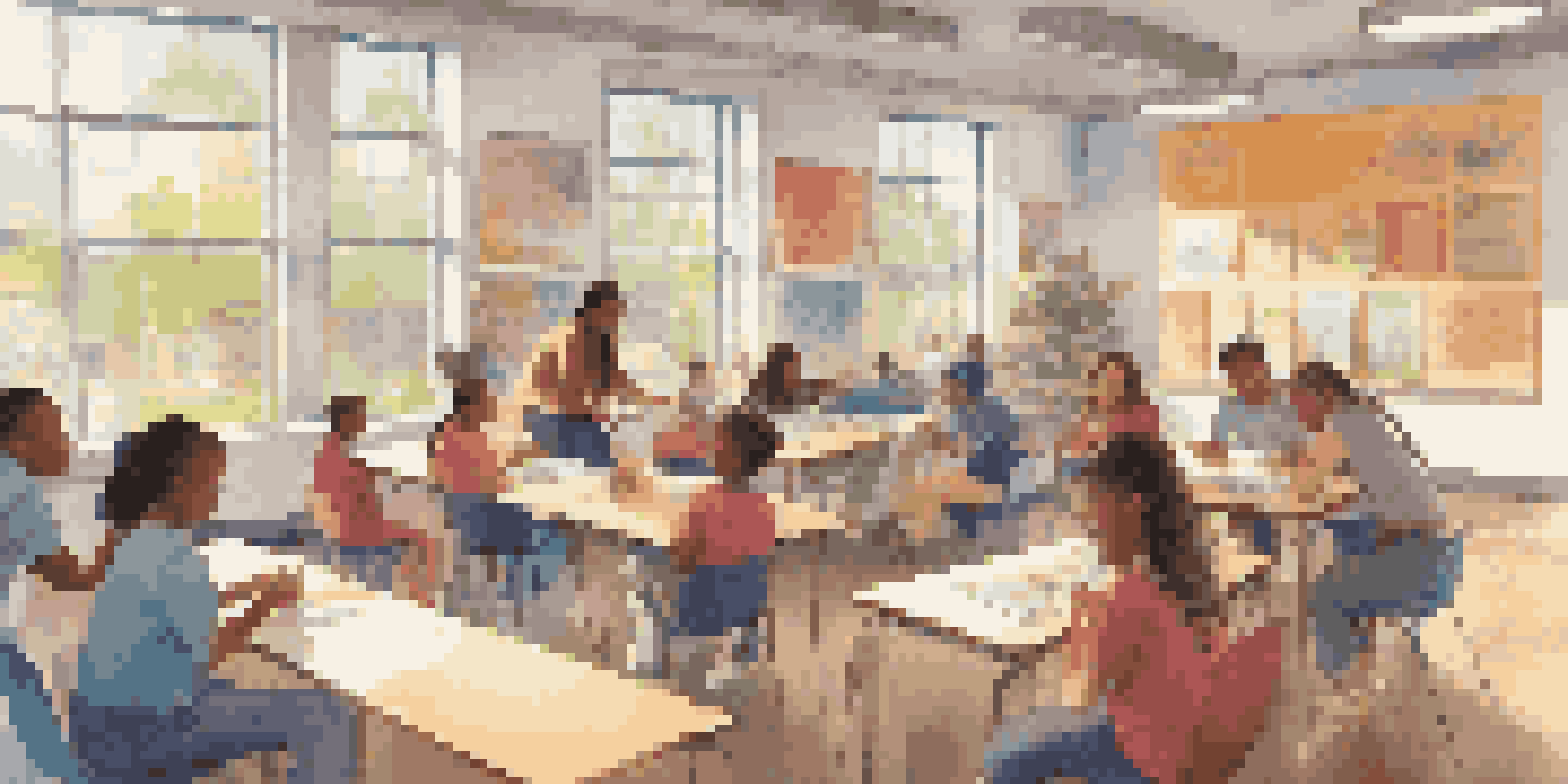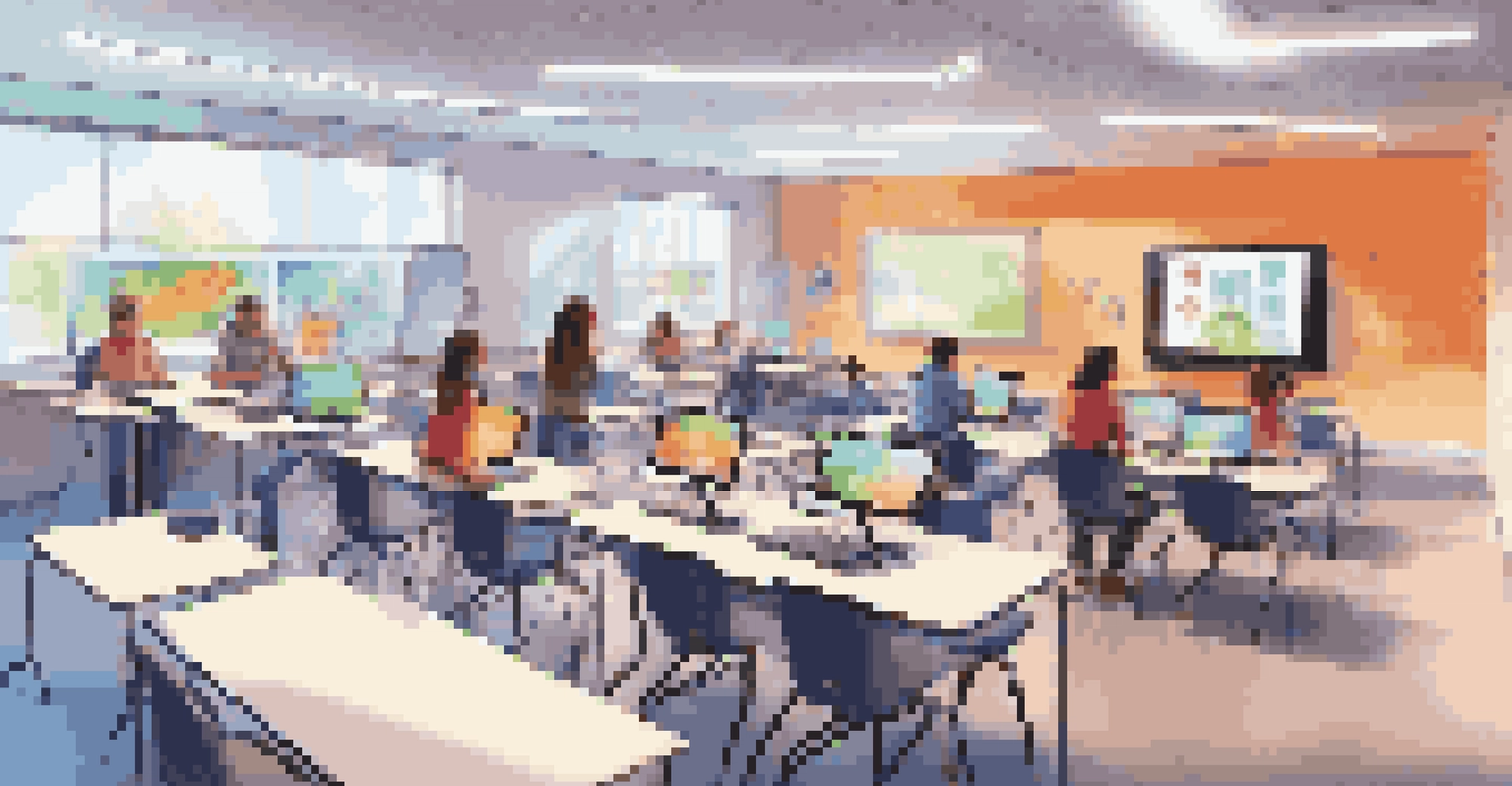Designing Learning Experiences with a Growth Mindset Approach

Understanding Growth Mindset in Learning Environments
A growth mindset is the belief that abilities and intelligence can be developed through dedication and hard work. This concept, popularized by psychologist Carol Dweck, emphasizes resilience and the value of effort in achieving success. In learning environments, adopting this mindset can lead to more engaging and effective educational experiences.
In a growth mindset, challenges are seen as opportunities to learn and grow.
When students believe they can improve, they are more likely to embrace challenges and persist through difficulties. This attitude fosters a love for learning, encouraging students to seek out opportunities for growth rather than shying away from tasks they find difficult. Consequently, classrooms that nurture a growth mindset can become vibrant spaces of exploration and innovation.
Incorporating a growth mindset into teaching strategies not only benefits students but also educators. Teachers who model this mindset can create a supportive atmosphere that encourages risk-taking and celebrates progress. Ultimately, this leads to a culture of continuous improvement where both students and teachers thrive.
Creating a Safe Space for Learning and Risk-Taking
To foster a growth mindset, it's crucial to create a safe learning environment where students feel comfortable taking risks. This means encouraging questions, promoting open dialogue, and embracing mistakes as learning opportunities. When students know they can express themselves without fear of judgment, their creativity and engagement flourish.

For example, consider a classroom where students are invited to share their ideas, even if they're not fully formed. This openness can lead to collaborative problem-solving, with peers supporting one another through constructive feedback. Such an atmosphere not only builds confidence but also reinforces the notion that learning is a journey filled with ups and downs.
Embrace Challenges for Growth
Adopting a growth mindset encourages students to see challenges as opportunities for learning and improvement.
Additionally, celebrating effort, persistence, and improvement rather than just final grades can significantly contribute to this safe space. By recognizing students for their hard work and progress, educators help instill the belief that their abilities can grow over time, further nurturing that growth mindset.
Incorporating Feedback Loops in Learning Experiences
Feedback is a powerful tool in learning, especially when designed with a growth mindset in mind. Rather than focusing solely on what needs improvement, effective feedback should highlight strengths while offering constructive suggestions for growth. This balanced approach helps students understand their progress and areas for development without feeling discouraged.
Mistakes are a fact of life. It is the response to the error that counts.
For instance, instead of simply marking an assignment as incorrect, a teacher might provide comments that guide students on how to approach similar problems in the future. This not only clarifies misunderstandings but also encourages students to view feedback as a chance to learn rather than a criticism. Over time, this shifts their perspective on challenges, making them less intimidating.
Furthermore, regular check-ins and opportunities for self-assessment can empower students to take ownership of their learning journey. By reflecting on their growth, students can set personal goals and recognize their advancements, which reinforces the idea that effort leads to improvement.
Setting Challenging Yet Achievable Goals
Setting goals is an essential part of the learning process, and when done thoughtfully, it can significantly enhance a growth mindset. Goals should be challenging yet attainable, providing students with a clear roadmap for their learning journey. This balance helps students stay motivated and focused on their progress, rather than feeling overwhelmed by unrealistic expectations.
For example, instead of setting a vague goal like 'get better at math,' a more specific goal like 'improve my problem-solving skills by practicing three extra problems each week' offers clarity. This specificity allows students to measure their progress and celebrate small victories along the way, which reinforces their belief in their ability to grow.
Create Safe Learning Environments
Establishing a supportive atmosphere allows students to take risks, express ideas, and learn from mistakes.
Moreover, involving students in the goal-setting process fosters a sense of ownership and accountability. When learners have a say in their objectives, they are more likely to stay committed and engaged, viewing challenges as opportunities for growth rather than obstacles.
Encouraging Collaborative Learning Experiences
Collaboration is a key ingredient in designing learning experiences that promote a growth mindset. Working with peers allows students to share diverse perspectives and strategies, enhancing their understanding of concepts. This collective approach not only deepens learning but also fosters a sense of community, where students support each other in their growth journeys.
Group projects, peer review sessions, and collaborative problem-solving activities can all create opportunities for students to learn from one another. For instance, when students explain their thought processes to their peers, they reinforce their own understanding while also gaining insight from different viewpoints. Such interactions can spark new ideas and inspire creative solutions.
Additionally, collaboration teaches students valuable social skills, such as communication and teamwork. These skills are essential for their future success, as they learn to navigate challenges together and celebrate each other's achievements. This shared learning experience reinforces the idea that growth is a collective effort.
Utilizing Technology to Support Growth Mindset Learning
In today's digital age, technology offers innovative ways to design learning experiences that align with a growth mindset. Online platforms and educational apps can provide personalized learning paths, allowing students to progress at their own pace. This flexibility empowers learners to take control of their education and explore topics that spark their interest.
For instance, gamified learning tools can motivate students by rewarding their efforts and progress. These platforms often incorporate elements such as badges, levels, and challenges that reinforce a sense of achievement and encourage continued learning. By turning the learning process into an engaging game, students are more likely to embrace challenges and view setbacks as part of the journey.
Utilize Feedback for Improvement
Effective feedback highlights strengths and provides constructive suggestions, helping students view critiques as chances to grow.
Moreover, technology can facilitate collaboration by connecting students beyond the classroom. Virtual study groups and discussion forums expand opportunities for peer interaction, allowing students to share insights and learn from each other. This connectedness not only enriches the learning experience but also reinforces the collective growth mindset.
Reflecting on Learning to Foster Growth Mindset
Reflection is a powerful practice that can deepen learning and reinforce a growth mindset. Encouraging students to regularly reflect on their experiences helps them recognize their progress and identify areas for improvement. This process of self-evaluation is essential for instilling a belief in their ability to grow and develop over time.
For example, journaling or guided reflection prompts can encourage students to think critically about their learning experiences. By asking questions like 'What challenges did I face, and how did I overcome them?' students can gain insights into their problem-solving strategies and resilience. This practice not only builds self-awareness but also highlights their growth journey.

Additionally, group reflections can foster a sense of community and shared learning. By discussing their experiences with peers, students can learn from one another's perspectives and recognize that everyone faces challenges. This collective reflection reinforces the idea that growth is a shared experience, further nurturing a positive learning environment.